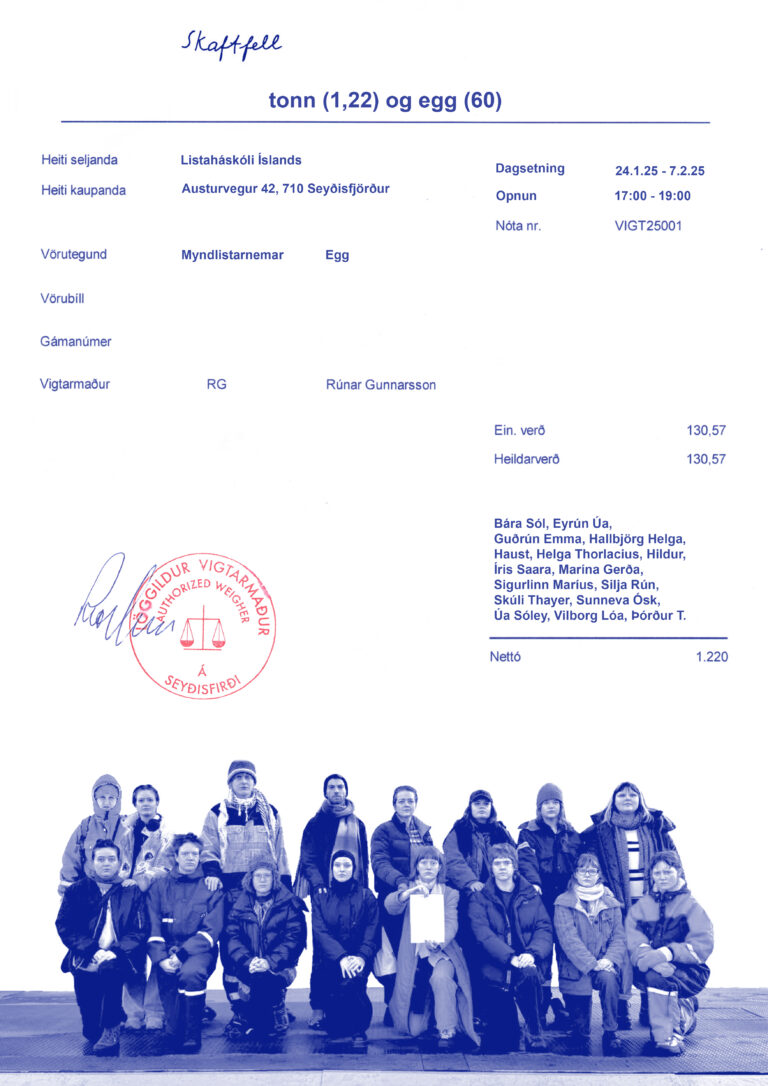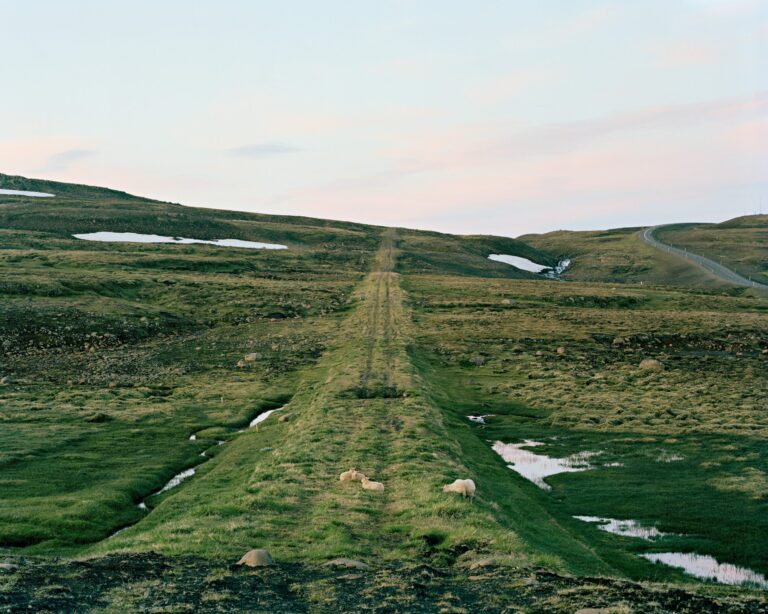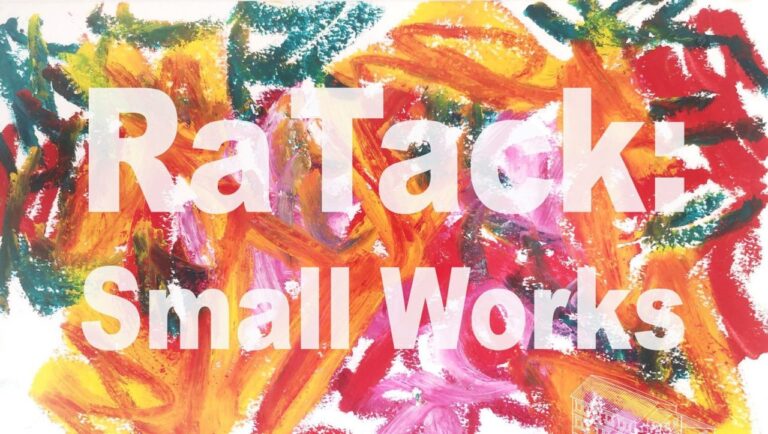Skaftfell summer exhibition in 2017, Edge Effects, is the second of seven exhibitions opening in the multipolar exhibition series witin the international collaboration project Frontiers in Retreat. Three artists, Kati Gausmann, Ráðhildur Ingadóttir and Richard Skelton were invited for an artistic residency in Seyðisfjörður, East Iceland to explore the intersection of visual art and ecological issues. The artists travelled twice to the location, staying for a total of three months each. Icelandic nature quickly captivated the newcomers but within a short time frame each artists had multiple threads to explore, ranging from past to future, humans to non-humans, consciousness to non-consciousness and the natural world to technology. After the first residency session key words became to merge: co-existence, intelligibility, nature engagement, the invisible world, social wealth, material resources and local knowledge. The second residency period was concentrated on combining and transforming the different treads, ideas and feelings into actual artistic output that are now be on exhibition in the Skaftfell gallery.
Artistic culmination took many forms. In Kati Gausmann´s artistic practice concepts like the scale of time and space, universal and terrestrial rhythms intrinsic to human experience are explored through photography, drawings and sculptures. Gausmann´s approaches these concepts as sculptural phenomena and entitles her work “dancing dough and circumstances”, referring to earth’s crust as an ever-changing form with movements that humans can never abandon. During the residency session Gausmann devoted her time on studying the extravagant geographical surroundings and history that are unique in east Iceland. She investigated the mountains and rocks that encircle Seyðisfjörður and made reliefs and frottage using latex and paper. The process was both physical and time-consuming, forcing the artists to commute repeatedly to the same locations. The outcome, that are on exhibition, is a series of black and white heavy textured prints on paper, transparent paper as well as Plexiglas. By focusing on details in the macro world Gausmann presents a new way of preserving the world, in relation to the human lifetime, earth history and universal rhythms. Also on display are the original Latex reliefs both mounted on the wall and hanging from the ceiling. The foreign chemical substance transforms to natural, almost recognizable, form and concealed within are little rock and moss.
Ráðhildur Ingadóttir, an Icelandic artist, focused her investigation on two different projects. Her long-term interest in wool fleece, a material in the microenvironment that is for the larger part discarded by the local farmers, lead her on a journey of finding ways to process the natural wool and transform into good quality thread without mixing it with foreign wool. She collaborated with a farm in the fjord and collected wool fleece from different seasons of the year. She cleaned the wool gently by hand in large fish containers, dried it outside and did various tests to figure out what part of the fleece is most usable. Her material-research lead her to the conclusion that it is quite possible to make good quality thread from solely Icelandic wool fleece. Objects and sculptures of wool were made in the process, as well as many installations that have been exhibited in Iceland and Europe. These installations have usually also contained sound, and sometimes video. During these investigations Ingadóttir got acquainted with a nearly ninety-year-old local farmer, Svandís. The two women formed a friendship and Ingadóttir started recording Svandís doing everyday domestic tasks while they engaged in a conversation with each other. In the gallery Ingadóttir´s installation consists of two components, an arrangement of multiple wool fleece, and a video projection with selected scenes from the recording sessions with Svandís. Alongside there are a two sculptures, made out of wool, thread and rocks, spread around the space.
Shortly after starting his previous residency stay Richard Skelton started an online journal blogg of his observations and findings entitled Towards a frontier. Later he made collages and a book with the same title, that displays an array of imagery and texts from various sources, collected during the residencies in Skaftfell. His interest in water related phenomena lead him to the making of his short film, In Pursuit of the Eleventh Measure, where reflections on Scandinavian ideas about water, folklore, religion and Iceland’s hydro-electricity industry were explored. The New Red list is a text-based work, inspired partly by Icelandic artists Birgir Andrésson, reflects on artifice of taxonomic systems. Skelton randomly combines genus and species names from the IUCN Red List of Critically Endangered Species and a new list of impossible hybrids emerges. In 2016 the Centre for Alterity Studies came to existence. The centre, CFAS, is the artist’s attempt to create a network and engage with other artists and researchers who are looking into non-human otherness, encompassing animal, plant and mineral alterity. The newest artwork by Skelton, and perhaps the most personal one, is the short film No Frontier. The film is an audio-visual exploration of the psychological effects of travel, climate change, remoteness and isolation.
Tinna Guðmundsdóttir
While borders draw divisive lines, frontiers are transition and contact zones. Diversity is always richest in areas where different ecosystems meet: This is the edge effect. An encounter never leaves one unaffected.
In the five-year international collaboration project Frontiers in Retreat (2013–2018), seven residency sites at the edges of Europe have been approached using various artistic and multidisciplinary methods. These remote sites are seen as frontiers where entanglements between human and other life forms become tangible. They allow insight into the entwined processes of ecological, social, and economic change – in their local manifestations and across a planetary scale.
The project has mapped out artistic practices that respond to ecological concerns, and explored the diverse ways in which ecology can be perceived and approached. In total 25 artists have been invited to conduct research and produce new work in response to particular ecosystems. Their research has ranged across fjords, forests, islands, villages, towns, cities, and mountains in Iceland, Finland, Scotland, Latvia, Lithuania, Serbia, and Spain. Throughout the project, the participating artists and organisations have challenged the initial premises of the project – productively, towards increased diversity. Rather than a fixed set of theories, concepts, and methods, there are multiple voices and views, positions and practices: the edge effect, indeed.
In 2017, Frontiers in Retreat organises the exhibition series Edge Effects. Its seven satellite exhibitions weave together the geographically dispersed processes and key discourses developed during the past four years. Besides reflecting the differences and resonances between the particular Frontiers sites, these discussions migrate into a new context via a group exhibition at Art Sonje Center in Seoul.
Through creating a platform for shared inquiry, Frontiers in Retreat has brought seven geographically dispersed sites closer to each other on the world map. Instead of conventional cartography, the process has resembled a kind of deep mapping: while engaging with the unique characteristics of each site, the participants have also learned about the complex co-dependencies and forces shaping habitats, human and non-human life trajectories, and migration patterns globally.
In the ethos of Frontiers in Retreat, the 2017–2018 Edge Effects events pose critical questions about the constitution of frontiers and boundaries. Another focus is the search for a new paradigm beyond the fossil-fuelled modes of living that are inevitably coming to an end. These focal points are being kept in mind while acknowledging that art should not be instrumentalised for the purposes of finding simplistic solutions. Instead, it can reveal conflicts within our values, formulate questions that challenge the status quo, and create a space for discussion and debate. As the Frontiers project continues as an open platform that branches out to new contexts, further edge effects can be expected.
Jenni Nurmenniemi
Curator, Frontiers in Retreat; HIAP – Helsinki International Artist Programme
Taru Elfving
Curator, Project initiator and curatorial advisor
Previous project activities at Skaftfell
Preview exhibition, June 2016: In Progress
Symposium, May 2016: Tool-kit for survivalism at the edge of the world
About the artists
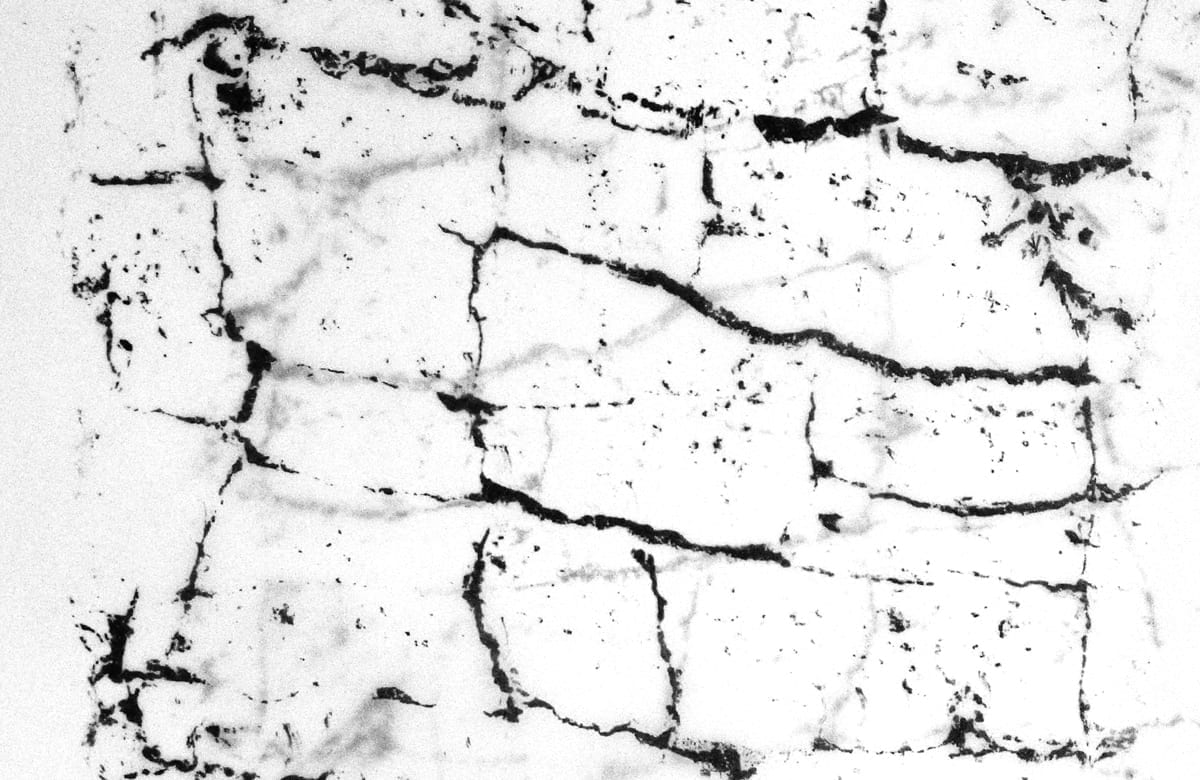
Kati Gausmann’s (b. 1968, lives and works in Berlin) works have movement, rhythm and activity as their form-creating principles. Her practice is often site specific. The works can relate directly 1:1 to natural environments or phenomena or made in other scales inside her studio, in exhibitions or in public space. Her work is always based on theoretical foundation and philosophical questions. For the last years Gausmann has focused on geological and terrestrial processes such as rotation of the Earth and continental drift. She is fascinated by the global and universal rhythms intrinsic to human experience as well as by the limits of human perception. Gausmann has realised and exhibited works in Germany, Norway, Iceland, Poland and Korea.
For Frontiers in Retreat, Kati developed a specific project “dancing dough and circumstances” (2014-). She started her project at Skaftfell in Seydisfjördur, East Iceland, in September 2014 and May–June 2016. She will continue the project at CAN, Centre d’Art i Natura in Farrera, Catalonia, in March-April 2017.
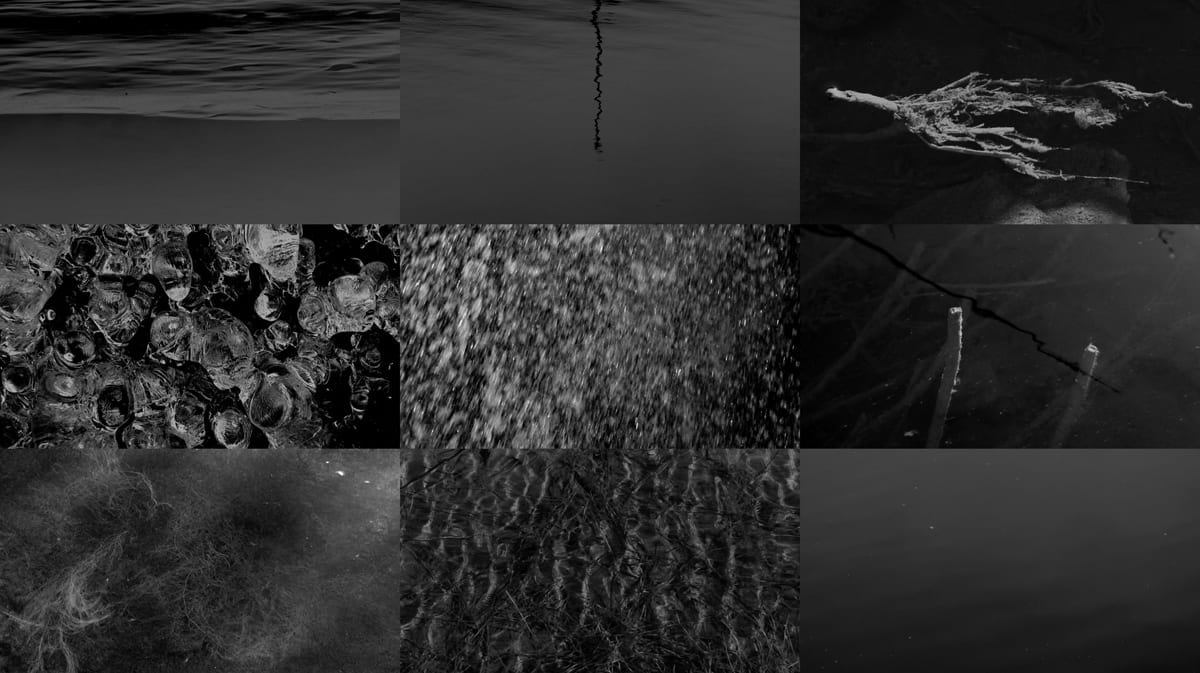
Richard Skelton is an artist from northern England, UK. His work is informed by landscape, evolving from sustained immersion in specific environments and deep, wide-ranging research incorporating toponymy and language, ecology and geology, folklore and myth. Over the past 10 years he has worked with texts, artist’s books, films and music, but more recently he has become interested in using curation as a means of exploring counter-historical narratives. Alongside running Corbel Stone Press with the Canadian poet Autumn Richardson, he is ‘founding member’ of the Notional Research Group for Cultural Artefacts and the Centre for Alterity Studies.
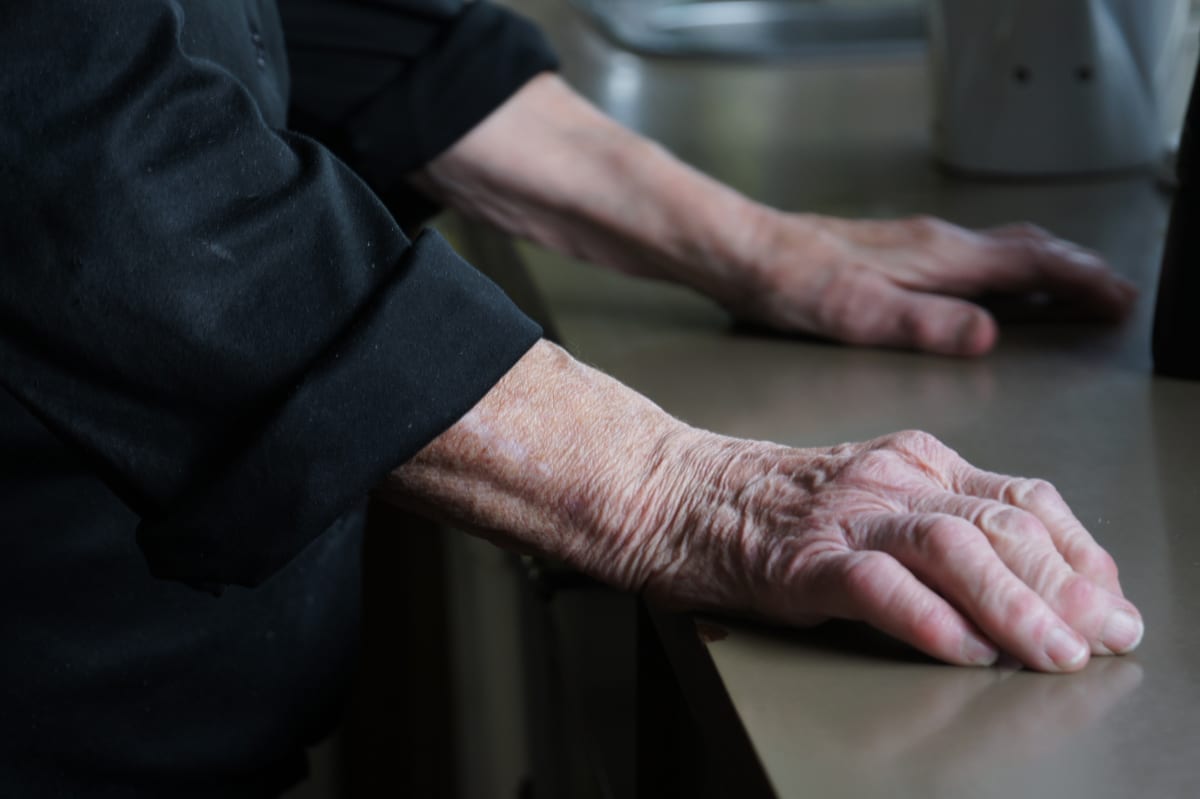
Ráðhildur Ingadóttir lives and works in Reykjavík and Copenhagen, She studied art in England from 1980 to 86, and has been active as an artist since then. Ingadóttir’s approach includes text, drawings, wall paintings, sculptures and videos and often these elements are incorporated into expansive installations. She has through the years exhibited extensively in Europe. Ingadóttir was a visiting lecturer at the Iceland Academy of the Arts from 1992-2002. She has also been visiting lecturer at the Royal Danish Academy of Fine Arts. She was on the board of the Living Art Museum in Reykjavik for some years, and curated and co-curated exhibitions there as well as elsewhere. From 2012 to 2014 she acted as an honorary artistic director at Skaftfell Center for Visual Art in Seyðisfjörður, Iceland. Ingadóttir has received art awards and travelling grants both in Iceland and Denmark.
About Frontiers in Retreat
Frontiers in Retreat is a five-year collaboration project that fosters multidisciplinary dialogue on ecological questions within a European network formed around artist residencies. The project sets out to examine processes of change in particular, sensitive ecological contexts within Europe, to reflect them in relation to each other and to develop new approaches to the urgencies posed by them. Moreover, the project recognises the necessity of multidisciplinary approaches to the current ecological concerns and aims to develop means and platforms for this through methods of contemporary art.
The project is coordinated by HIAP – Helsinki International Artist Programme with the support of the Culture Programme of the European Union. The project connects artist residency centers located in “remote” areas across Europe in order to provide a unique, transnational platform for investigating local and global ecological concerns. Frontiers in Retreat is realised by seven artist residency organisations in Finland, Iceland, Scotland, Latvia, Serbia, and Spain in collaboration with a Lithuanian art organisation that will develop the educational program of the project.
The core of the project is formed by research and production residencies. 25 European artists representing different cultures, generations and artistic approaches have been selected collaboratively by the project partners to develop new art works in response to the different ecological contexts of each residency site. During the coming years, the artists will circulate within the residency network and conduct artistic research driven by the particular ecologies of the sites.
More information www.frontiersinretreat.org and www.frontiersinretreat.org/edge-effects/
Collaborators
HIAP í Finnlandi, Mustarinda í Finnlandi, Scottish Sculpture Workshop SSW í Skotlandi, Interdisciplinary Art Group SERDE í Lettlandi, Cultural Front – GRAD í Serbíu, Centre d-Art i Natura de Farrera á Spáni og Jutempus í Litháen.
Partners
The Icelandic part of the project is funded support of the Culture Programme of the European Union, The Icelandic Visual Art Fund, The East Iceland Regional Development Fund, Seyðisfjörður Municipality and the Nature Preserve Fund of Pálmi Jónsson.
![]()

